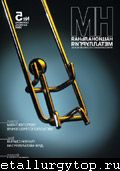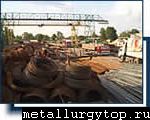Latest Technology Transfer
 China is eager to address one of the primary culprits behind its alarming coal mining fatalities, as evidenced by the Pre–Mining Degasification Symposium held in South China's Guizhou province on March 31st and April 1st. Sponsored by the province's Coal Mines Administration Bureau and the Coal Mine Safety Inspection and Supervision Bureau, coal mining executives gathered in Guiyang, a modest–sized city (by China's standards) of more than three million people, to discuss how the latest foreign technologies could help degasify China's 2,000 coal mines, both improving mine safety and reducing China's global output of air pollution. More than 80 representatives from 40 coal mines attended in China's second largest coal–producing province to find out about the latest foreign technology transfers, which might help reduce coal mining deaths.
China is eager to address one of the primary culprits behind its alarming coal mining fatalities, as evidenced by the Pre–Mining Degasification Symposium held in South China's Guizhou province on March 31st and April 1st. Sponsored by the province's Coal Mines Administration Bureau and the Coal Mine Safety Inspection and Supervision Bureau, coal mining executives gathered in Guiyang, a modest–sized city (by China's standards) of more than three million people, to discuss how the latest foreign technologies could help degasify China's 2,000 coal mines, both improving mine safety and reducing China's global output of air pollution. More than 80 representatives from 40 coal mines attended in China's second largest coal–producing province to find out about the latest foreign technology transfers, which might help reduce coal mining deaths.
Over the centuries as organic matter is converted to coal, methane, also known as CH4 and the primary constituent in natural gas, is produced during this process and stored in pockets within a coal seam. For every ton of coal produced, during the «coalification» process, more than 5000 cubic feet of methane is created. Coal mining releases this methane into the atmosphere. Over 90 percent of methane emissions come from underground coal mining. Because gas content is greater with depth, safety hazards increase during the underground coal mining process. Degasifying coal mines has been proven to help make those underground coal mines safer for miners.
Volatile gases produced during the coal mining process reportedly kill more than 15 miners every day in China, about 80 percent of the world's coal mining deaths. Prime Minister Wen Jiabao, a mining engineer by training, has demanded China improve conditions for Chinese coal miners. Critics, such as the Chinaworker.org, say the «underlying cause is a lack of investment in degasification equipment." The website claims, »Managers calculate that it's cheaper to pay out meager death benefits to miners' families than (to) raise investment." The Economist magazine reported that Chinese coal miners make as little as $60/monthly.
China is also concerned about its air emissions from coal mining. Worldwide, the coal mining industry released over 436 million metric tons of carbon dioxide equivalents in 2000. That accounted for about 8 percent of the total industrial methane emissions that year. China, Russia, Poland and the United States account for over 77 percent of coal mining methane emissions. Through the year 2020, China's share of worldwide emissions will jump to 45 percent. These emissions could be severely reduced if Chinese coal mines captured the methane gas for use in meeting its soaring energy needs, rather than vented into the atmosphere each time a new coal tunnel is opened.
One of the major draws at the Guiyang Pre–Mining Degasification Symposium were presentations about the latest coalbed methane drilling innovation by Tunaye Sai, Director of China Operations for Pacific Asia China Energy (TSX: PCE; Other OTC: PCEEF), and Nathan Mitchell of Mitchell Drilling Company (MDC) in Brisbane, Australia. Coal mining companies opened discussions with PCE after their presentation. "Executives from fifty mines showed interest in the Dymaxion® drilling technology to improve mining safety,« said Tunaye Sai. All of them showed interest? „All of them,“ responded Tunaye Sai. PCE reported in a news release on Wednesday, »The PACE–MDC joint venture group is currently preparing a business plan for the immediate development of this new strategy in order to address the demand, which arose from the attendees at this symposium."
«They are having problems in their mines,» explained Tunaye Sai, who is also a member of the Canadian Institute of Mining, Metallurgy and Petroleum. Because they have not been able to effectively degasify their mines, four of the attending Chinese coal mining companies immediately approached Tunaye Sai and Mitchell about using this state–of–the–art drilling technology. Earlier this year, PCE and MDC announced they were forming a joint venture to offer MDC's proprietary Dymaxion® drilling technology to companies in China, to help degasify their coal mines. MDC is Australia's largest privately owned drilling company, and their Dymaxion technology has been widely discussed by coal mining insiders. The PCE and MDC joint venture company has the exclusive rights to use the Dymaxion technology in China.
In a tape–recorded interview, Tunaye Sai told StockInterview, «The combination of a horizontal and vertical intersection draws the methane gas from the coal seam and captures it at the surface.» Australian newspapers have been exuberant over the Dymaxion® technique, calling it «revolutionary„ and “radical.» In its headline, one Australian newspaper called MDC's state–of–the–art G–55 drill rig «the Lamborghini of drill rigs,» and remarked how their drill rigs offered improved flexibility and cost efficiency.
The Dymaxion surface to in–seam (SIS) drilling method uses modified multipurpose mineral drill rigs, specially designed bottom–hole assemblies and specially trained personnel. The technique involves drilling a 60 to 90 degree hole from the surface and steering it through a medium radius bend to enter the target coal seam horizontally. The 96mm hole is then steered for up to 1200 meters in the seam towards a previously drilled vertical production well. A homing device, lowered down the vertical well to the target seam, aids the intersection with the vertical well. The vertical well is also equipped with a suitable pump to dewater the seam. After the hydrostatic head has been sufficiently lowered, the methane gas will flow to the surface. Newspaper reports also say this technique allows for significant savings over alternate underground gas drainage drilling methods.
The Dymaxion technology obviously turned heads at the recent Gasification Symposium. «One of the companies is a big company, mining 10 million tons of coal per year," said Tunaye Sai. »Last December, 12 people died in one of the coal mining company's tunnels." He explained that when coal miners are opening a tunnel, the gas comes out – sometimes explosively. «By using the Dymaxion technique, they can let the gas out before they begin mining a tunnel,» he added.
Discussions with the Chinese coal companies are in the initial stages. "They want to give us a block – not one that is being mined now, but one that may be mined in a few years,« said Tunaye Sai. »We're working on an arrangement right now because they are very interested.« He explained that the relationship would involve a continuous process. »We wouldn't just drill it and then abandon it,« he added. "We will be making sure that the gas will come out continuously and monitoring it.»
Tunaye Sai said that Pacific Asia China Energy was targeting the larger mines. «Among them, about ten companies mine about four million tons per year or more. Those are the ones we are talking to.„ PCE has ordered the drilling equipment, and it should arrive in China around October. ‹As soon as it is there, we can implement our plan, maybe in November or December.› He told us, “They have been asking us to demonstrate the equipment for them.» This may be an unexpected revenue surprise for Pacific Asia China Energy, and a blessing for Chinese coal miners whose lives may be spared, thanks to this latest technology transfer to China.
COPYRIGHT © 2007 by StockInterview, Inc. ALL RIGHTS RESERVED.





Bulgaria - Black Sea Gold
 Bulgaria is located in Southeastern Europe, bordering the Black Sea, between Romania and Turkey. It has a total area of 110,910 sq km, 110,550 sq km of which is land; with water comprising 360 sq km. this makes Bulgaria slightly larger than Tennessee. Bulgaria is bordered by Greece, Macedonia, Romania, Serbia, and last but not least Turkey. The climate is temperate with cold, damp winters and hot, dry summers. Bulgaria is rich in bauxite, copper, lead, zinc, coal, timber and arable land. Bulgaria's location is strategic because it is near the Turkish Straits; Bulgaria also controls key land routes from Europe to Middle East and Asia. Bulgaria has a population of 7,385,367 (2006) and a population growth rate of 0.86 per cent (2006), with 68.7 per cent between 15–64 years old.
Bulgaria is located in Southeastern Europe, bordering the Black Sea, between Romania and Turkey. It has a total area of 110,910 sq km, 110,550 sq km of which is land; with water comprising 360 sq km. this makes Bulgaria slightly larger than Tennessee. Bulgaria is bordered by Greece, Macedonia, Romania, Serbia, and last but not least Turkey. The climate is temperate with cold, damp winters and hot, dry summers. Bulgaria is rich in bauxite, copper, lead, zinc, coal, timber and arable land. Bulgaria's location is strategic because it is near the Turkish Straits; Bulgaria also controls key land routes from Europe to Middle East and Asia. Bulgaria has a population of 7,385,367 (2006) and a population growth rate of 0.86 per cent (2006), with 68.7 per cent between 15–64 years old.
Background
The Bulgars, a Central Asian Turkic tribe, merged with the local Slavic inhabitants in the late 7th century to form the first Bulgarian state. In succeeding centuries, Bulgaria struggled with the Byzantine Empire to assert its place in the Balkans, but by the end of the 14th century the country was overrun by the Ottoman Turks. Northern Bulgaria attained autonomy in 1878 and all of Bulgaria became independent from the Ottoman Empire in 1908. Bulgaria became a People's Republic in 1946. Bulgaria held its first multiparty election in 1990 with the fall of communism. It has moved towards democracy and a free market economy ever since. The country joined NATO in 2004 and the EU in 2007. Bulgaria accepts compulsory ICJ jurisdiction.
Economy
Bulgaria entered the European Union on 1 January 2007. The government is committed to economic reform and responsible fiscal planning. Minerals, including coal, copper, and zinc, play an important role in industry. In 1997, macroeconomic stability was reinforced by the imposition of a fixed exchange rate of the lev against the German D–mark – the currency is now fixed against the Euro, and the negotiation of an IMF standby agreement. Low inflation and steady progress on structural reforms have improved the business environment; Bulgaria has averaged 5.1 per cent growth since 2000 and has begun to attract significant amounts of FDI.
Tourism has always been a big industry in the country, and is still booming: one of the 130 hotels in Slanchev Bryag, one of the most popular resorts in Eastern Europe. The government has pledged to maintain the fundamental economic policy objectives, i.e. retaining the Currency Board, practising sound financial policies, accelerating privatisation, and pursuing structural reforms. Economic growth continued in 2005 and 2006.
Agricultural output has been growing in recent years. Farming is more important than stock–breeding. The prevalence of mechanisation is higher than most other Eastern European countries. There are more than 150,000 tractors, 10,000 combines, alongside aeroplanes and other equipment.
Industry is of great importance for the economy. Bulgaria is a major producer of electricity though it is not very rich in reserves of coal, oil and natural gas. A second plant, the Belene Nuclear Power Plant with a capacity of 2,000 MW is under construction. There is a $1.4 billion (£718 million) project for construction of an additional 670 MW for the 500 MW Maritza Iztok 1 TPP.
In production of steel and steel products per capita the country is first in the Balkans. Ferrous metallurgy is very important.
Property Market
The property market has been boosted recently by foreigners seeking additional homes. These buyers come from right across Europe but the largest numbers are British, encouraged by comparatively cheap property and because the country is more accessible through low cost air travel. The future for this particular country is bright indeed.





King Of Kings - It's Not What You Think It Means
 We hear Jesus referred to as «King of kings„ but what does it mean? We have a great deal of “Christianese» of this genre that we are prone to throwing around, arrogantly expecting that everyone who hears our pious, self–righteous, spiritual jargon will (A) understand us and (B) be impressed with how we wield that sword. For example, I recently gave a young man a book with the word «Christ» in the title. He couldn't even pronounce it, uncertain as to whether the "CH' were pronounced like a «K» (as in Kitten) or as the «CH„ in „Children.„ In case you did not know, „Christ„ comes from the Greek „Christos“ which refers to the “Anointed One.“ Every king and high priest was anointed on the head with holy oil in ancient times, a tradition that continues during coronations of monarchs of European and Arabian history to this day. The Hebrew word for “Christos“ is “Messiah.»
We hear Jesus referred to as «King of kings„ but what does it mean? We have a great deal of “Christianese» of this genre that we are prone to throwing around, arrogantly expecting that everyone who hears our pious, self–righteous, spiritual jargon will (A) understand us and (B) be impressed with how we wield that sword. For example, I recently gave a young man a book with the word «Christ» in the title. He couldn't even pronounce it, uncertain as to whether the "CH' were pronounced like a «K» (as in Kitten) or as the «CH„ in „Children.„ In case you did not know, „Christ„ comes from the Greek „Christos“ which refers to the “Anointed One.“ Every king and high priest was anointed on the head with holy oil in ancient times, a tradition that continues during coronations of monarchs of European and Arabian history to this day. The Hebrew word for “Christos“ is “Messiah.»
Many believe that «King of kings and Lord of lords» refers to Jesus Christ's supremacy over biblical kings such as Herod, Pontius Pilate, all the rulers whose names are mentioned in the Old Testament. Certainly, history's kings like Charlemagne and Henry VIII, even America's Presidents were all much lower «kings» than the God of Abraham, Isaac and Jacob. But the phrase refers to something much more important than earthly kingdoms and territorial governments.
God, through His Christ – the Anointed King – broke into the world to establish His own sovereignty in the lives of every man and, thereby, defeat the powers of Satan (I John 3:8). Logically, the message we have to offer the world should center upon this. Sadly, too often it does not. A primary example of this – a major issue within the Body of Christ that serves to do little more than create or fuel the fires of dissension – is that we are unwittingly, if not deliberately, preaching a Gospel of Salvation rather than the Gospel of the Kingdom as Jesus exemplified.
Think about it! From one denomination to the next, the methods regarding how an individual is «saved» are legion. Baptism, professions of faith, adherence to dogmas and doctrines of men, recited prayers, mere membership…the list goes on and on, especially in «Christian» America. The Kingdom message has cosmic dimensions WAY beyond conversion of the masses (Jesus instructed us to make disciples, not mere converts). It calls people to repentance on the basis of the works of the King – NOT their own deeds. This King governs a spiritual Kingdom; He loves them and desires to rule with them in the world. Once that commitment is made, one can be properly discipled to reflect the nature of this holy God in whose image we were made, spirit–beings whose earthly mission is to advance the Kingdom by sharing this Good News with others, NOT converting them or even merely dragging them to a church service.
KING OF THE JEWS…AND OTHERS!




